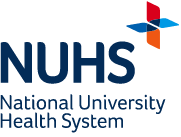Spine AI significantly cuts more than half the time it takes for radiologists to interpret MRI scans, study shows
Singapore — Lumbar spinal stenosis is a narrowing of the spinal canal in the lower back, leading to compression of the nerves supplying the lower limbs. Patients typically present with cramps and pain in the buttocks or legs while walking, which are relieved by sitting or bending forward.
About one in 10 people in the general population1 are affected by lumbar spinal stenosis, which relies on a lumbar MRI scan as the most important tool for diagnosis.
In a significant advancement for medical diagnostics, an in-house artificial intelligence (AI) deep learning system which more than halves the time it takes for a radiologist to interpret an MRI scan is now being used at the National University Hospital (NUH).
Since June, Spine AI has been trialled in more than 50 patients. The deep learning tool automatically detects the area where narrowing of the spinal canal occurs, as well as categorises the severity of stenosis, providing rapid results that enhance clinical decision-making and efficiency.
Developed in-house by NUH in collaboration with a team from the National University of Singapore’s School of Computing (NUS Computing) and the National University Spine Institute, Spine AI was trained using lumbar spine MRI studies from 446 patients, encompassing more than 18,000 images.
Traditionally, after a patient has undergone an MRI scan, a radiologist will manually assess the severity of stenosis at every level along the lumbar spine. With five spinal segments that each have five potential sites for stenosis, this means the radiologist has to analyse 25 regions in a patient’s spine before writing up a report, a process that can take 10 minutes or more.
Dr Andrew Makmur, Group Chief Technology Officer, National University Health System (NUHS), and Consultant, Department of Diagnostic Imaging, NUH, said: “The degree of stenosis, or narrowing, at each region plays a role in determining the appropriate treatment, but detailing such information in a report can be repetitive and time-consuming. In addition, there are multiple grading systems for lumbar spinal stenosis, with a lack of standardisation.”
Dr Makmur and Dr James Hallinan, Senior Consultant, Department of Diagnostic Imaging, NUH, spearheaded the development of Spine AI, which improves the consistency, accuracy and objectivity of MRI scan assessment.
Dr Hallinan explained: “The model will automatically detect the sites of stenosis and then grade the severity, before automatically generating a report. Colour-coded boxes will then be placed along every site in the lumbar spine to enable the radiologist to quickly inspect the gradings. This streamlined process can reduce the time for interpretation of a scan from 10 minutes to just 3 minutes.”
In a study published in the medical journal Radiology in 2022, it showed that radiologists who used Spine AI took as short as 47 seconds to interpret each spine MRI study, compared with up to 4½ minutes when they did not use the model.
This time-saving advantage was observed across all experience levels, with in-training radiologists having the largest mean time saving of 74 per cent when using Spine AI.
Dr Makmur estimated that with about 4,000 lumbar MRI scans done in NUH each year, and approximately 7 minutes saved per MRI scan, this translates to about 466 hours saved a year.
He said: “AI is transforming spinal imaging and patient care through automated analysis and enhanced decision-making. With Singapore’s ageing population and an expected increase in imaging volume, there is great potential for Spine AI to augment radiologists’ efficiency and allow them to focus on more complex cases.”
Dr Jonathan Tan, Consultant, University Spine Centre, Department of Orthopaedic Surgery, NUH, said: “Lumbar spinal stenosis can lead to a significant loss of mobility and quality of life. It is the most common indication for spinal surgery in patients aged 65 and above. Spine AI can potentially contribute to the efficient diagnosis and classification of this common condition to enable prompt and appropriate interventions.
“While AI can accurately identify areas of spinal stenosis, the decision to treat is based primarily on the patient’s symptoms and a doctor’s clinical judgement, as not all individuals with spinal stenosis experience discomfort or physical limitations,” he added.
Professor Ooi Beng Chin from the Department of Computer Science at NUS Computing said: “To develop Spine AI, we had to ensure accurate anatomical modelling of the spine and consistent performance in detecting abnormalities in diverse patient populations. Efficient data labelling was crucial in this aspect.”
In November 2023, NUH partnered Germany-based medical technology company Siemens Healthineers to optimise the user interface/user experience (UI/UX) of Spine AI. This collaboration aims to bring the AI tool to a global market, where it could have a transformational impact on spinal care worldwide.
“Siemens Healthineers is proud to be partnering with the NUHS team on the Spine AI project, integrating the AI solution into its clinical workflow. This has a significant impact on both clinicians and patients,” said Ms Siow Ai Li, Managing Director of Siemens Healthineers Singapore and Malaysia.
“It is wonderful to see how this AI solution is now accessible throughout the NUHS radiology department for clinical evaluation. With the success of this collaboration, we are confident that Spine AI will enable radiologists to quickly identify abnormalities in a large volume of scans, improving efficiency and reducing the burden of repetitive tasks through automation.
“This project clearly demonstrates Singapore’s commitment and ability to build clinical AI solutions, and we are very proud to be able to leverage the integration capabilities of Siemens Healthineers’ existing digital solutions within the radiology infrastructure to deploy the Spine AI model smoothly. We hope that this approach will serve as a template for further adoption and integration of AI solutions in clinical environments, ultimately benefiting patients by enabling faster diagnosis and treatment," she added.
To download the PDF version of the media release, click here.

















